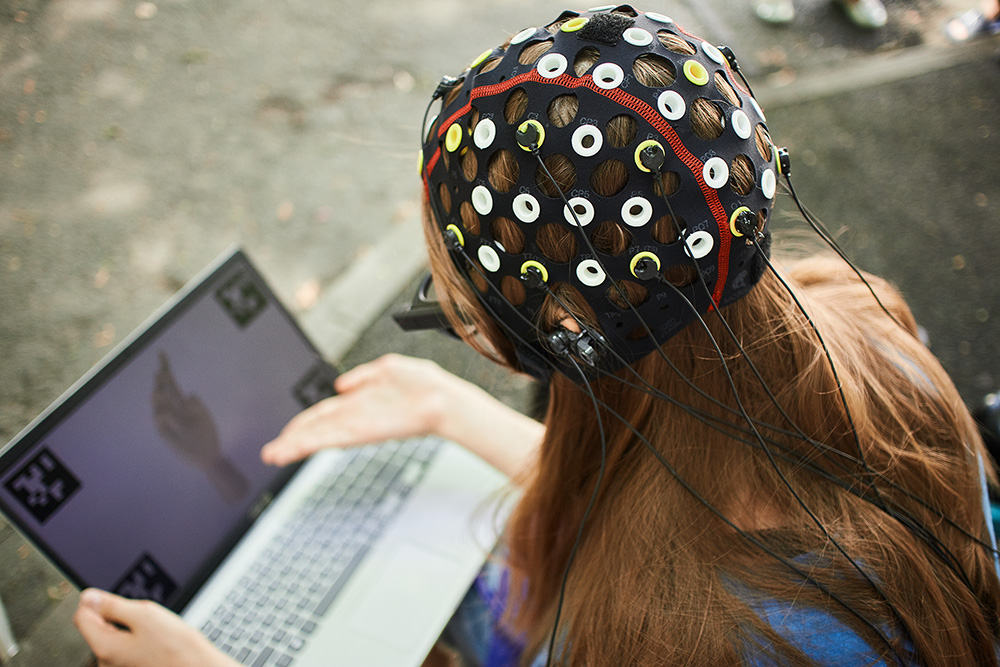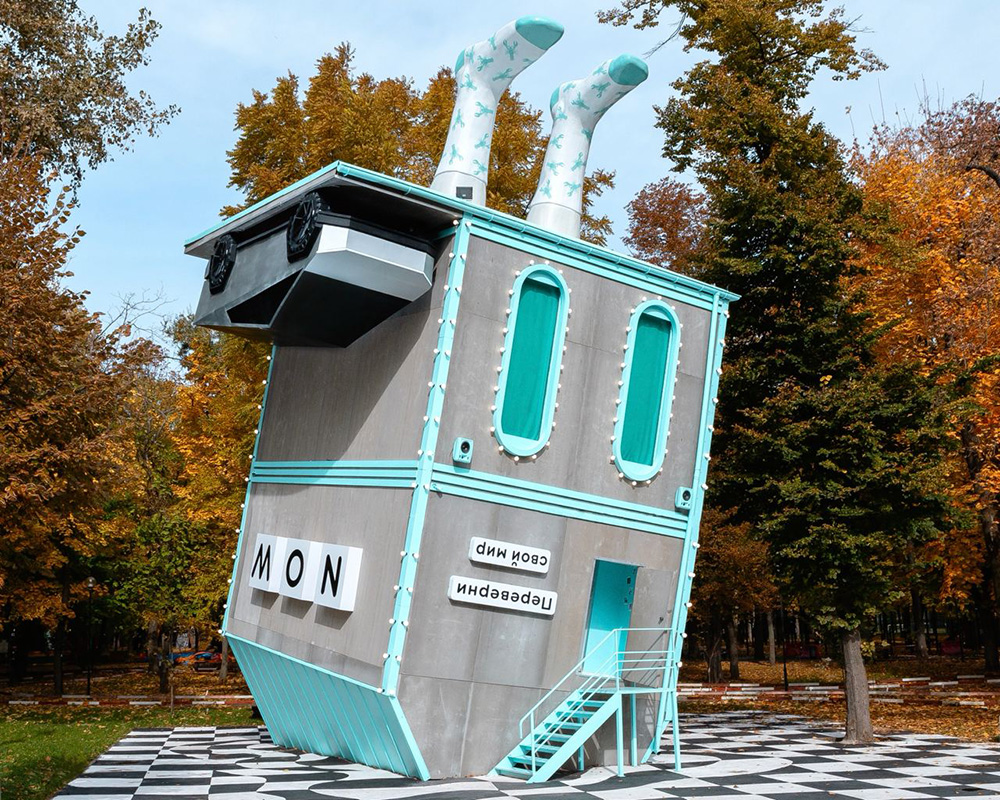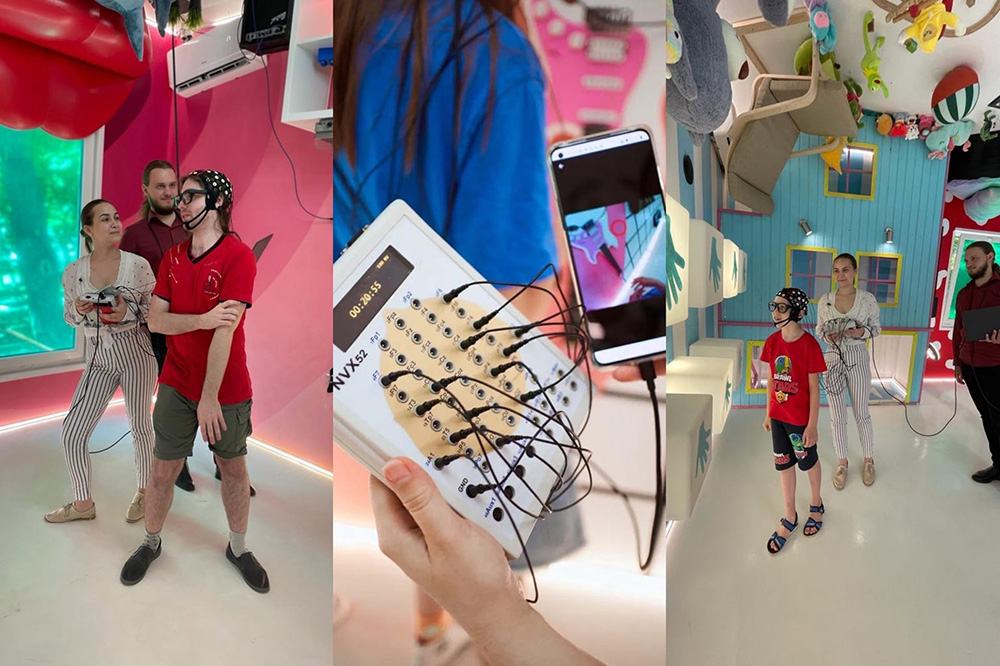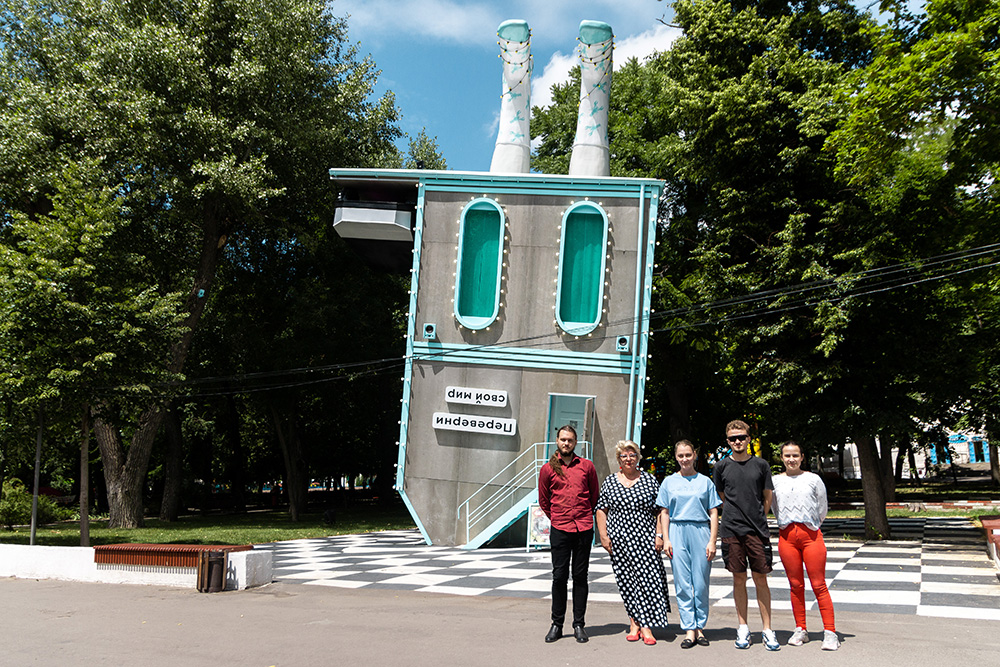The Academy of Psychology and Pedagogy of the Southern Federal University staff investigated the indicators of human adaptation in the “Upside-down House” of the October Revolution Park in Rostov-on-Don. They showed how changing the usual environmental conditions and being “out of the comfort zone” affects human behavior, cognitive functions, and functional state.
For centuries, a person’s personal resources have remained the most crucial factor for new achievements and successes, the leading social potential. It is no accident that economists, sociologists, philosophers, educators, psychologists, and physiologists pay great attention to their development. Innate and acquired endogenous and exogenous factors play an essential role in developing personal potential: gender, age, functional state of the organism, individual typological features, learning conditions, nature of the environment, and others.

“In recent years, in practice, there is more and more data on the possibility of “rebooting” and updating personal resources when a person is in unusual, and sometimes even extreme, conditions. Leaving the comfort zone provokes a person to changes, which, in turn, increase his adaptive capabilities, contribute to the development of his intellectual and creative potential. However, the studies devoted to the verification of this provision are of a single nature due to the difficulties of modeling such conditions,” said Lyudmila Dikaya, Chief Researcher of the SFU APIP, head of the Research Laboratory of Theory and Practice of Education and Development of Persons with Special Educational Needs, Associate Professor.
Employees of the Research Laboratory of Theory and Practice of Education and Development of Persons with Special Educational Needs of the Academy of Psychology and Pedagogy of the SFU Valeria Egorova, Evgeny Meleshchenko, Victoria Ryzhova under the guidance of Associate Professor Lyudmila Dikaya. The adaptation of a person to changing the conditions of his stay was studied using the example of the interactive space “Inverted House”. The experiment was conducted in the summer of 2022 in the Park of the October Revolution of Rostov-on-Don in a building designed by CULT-STROY under a special slope in two planes of 10° and 13°.

Experts have found that under the changed conditions, all participants in the experiment have increased flexibility and originality of thinking. At the same time, the number of proposed ideas increases in adults and decreases in children compared to the conditions for performing this task outside of this space. In addition, about half of the respondents during the experiment felt good and were interested in new sensations: most of all, the changed space fascinated teenagers.
“Participants of different age groups adapted differently to unfamiliar conditions. Thus, more than 80% of visitors got used to the interactive space within the first five minutes and 47% of them within the first minute. The easiest adaptation was given to participants aged 14-16 years (80%), and it was difficult at the age of 20-23 years (50%)”, Lyudmila Dikaya noted.

Scientists also found a strong change in the electrical activity of the cerebral cortex in people aged 20-23 years before and after visiting the inverted space, which was not observed in young children. According to experts, this difference may be due to the higher rigidity of adults compared to children.
At the same time, when creating original solutions, all participants in the study observed a significant activation of the parietal-occipital regions of the cerebral cortex and activation of the processes of anticipation. According to scientists, this is due to the restructuring of functional brain systems – they are “reconfigured” to perform creative tasks.

The study results suggest the possibility of developing creativity in a new model of a unique environment. In such a situation, a person needs the actualization of creative resources since he has no experience with behavior in such conditions. Consequently, it is in an unusual environment for a person that it is easier for him to abandon the usual patterns and stereotypes that can become barriers to finding an effective solution. The obtained data can be applied in education, psycho-correction, and psychotherapy, as well as in the gaming industry, when designing such objects with benefits for the population.





